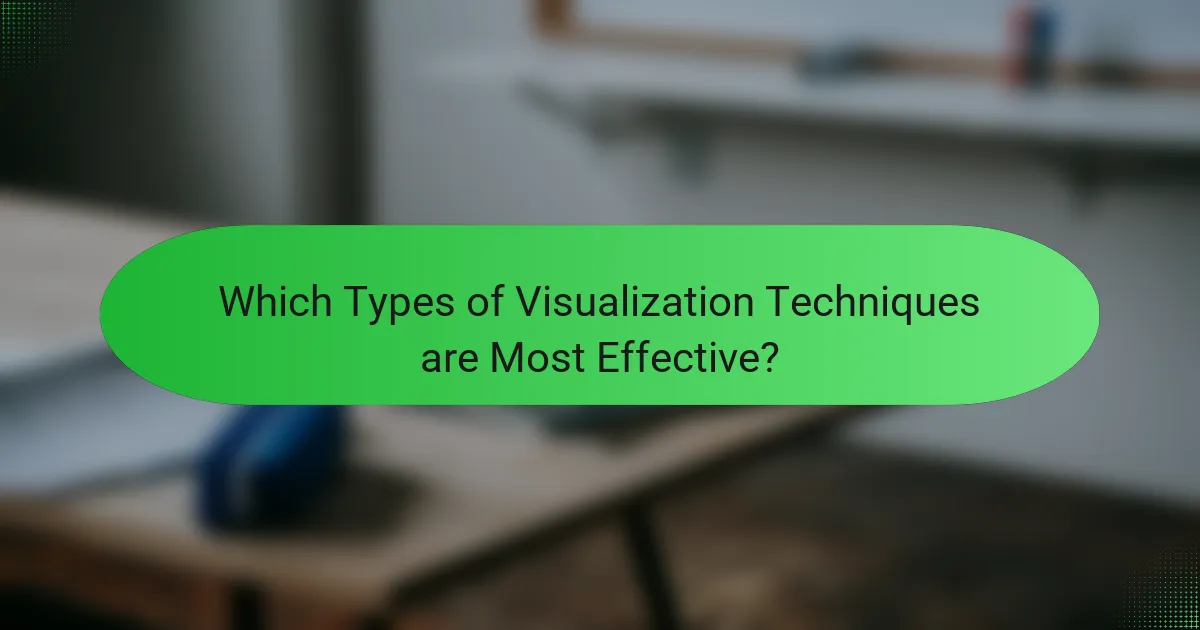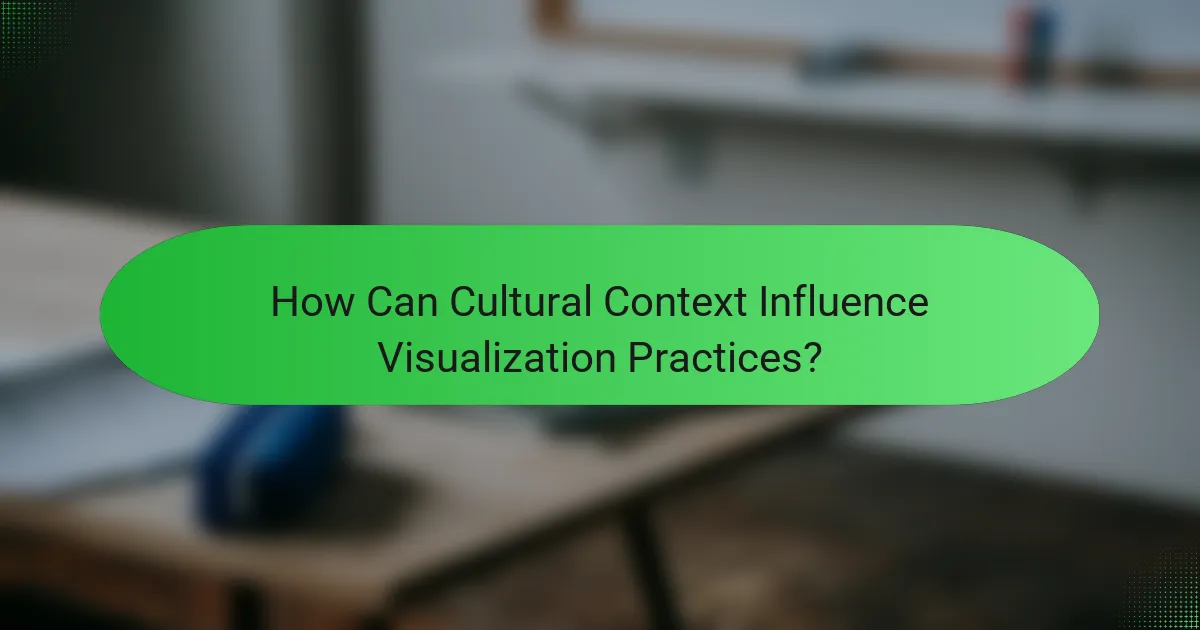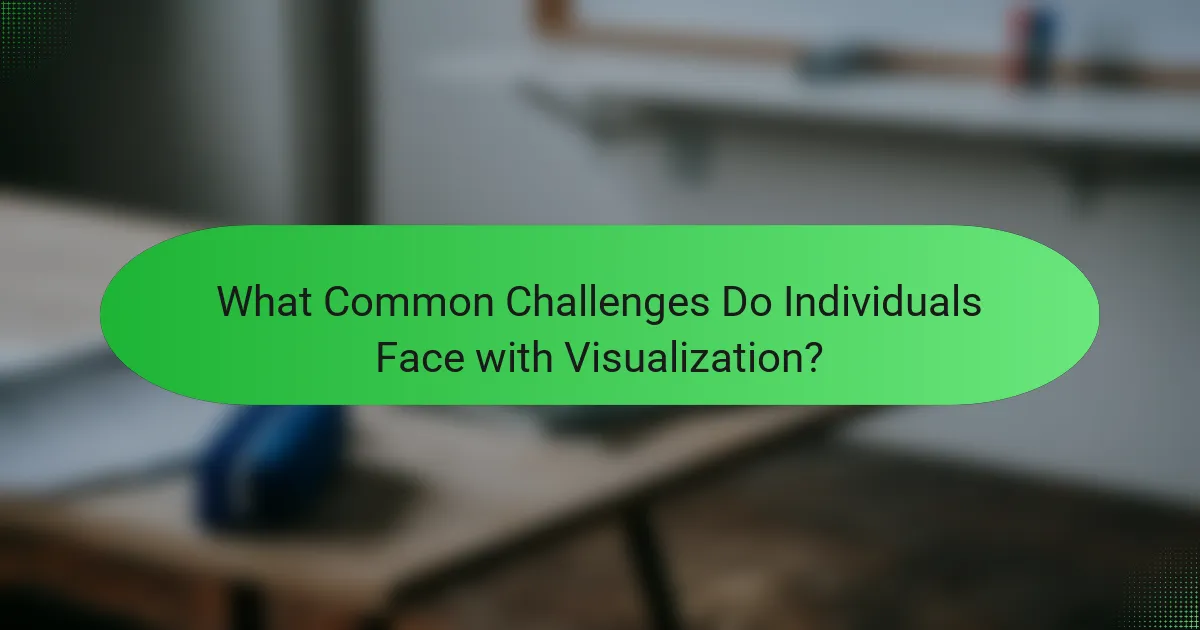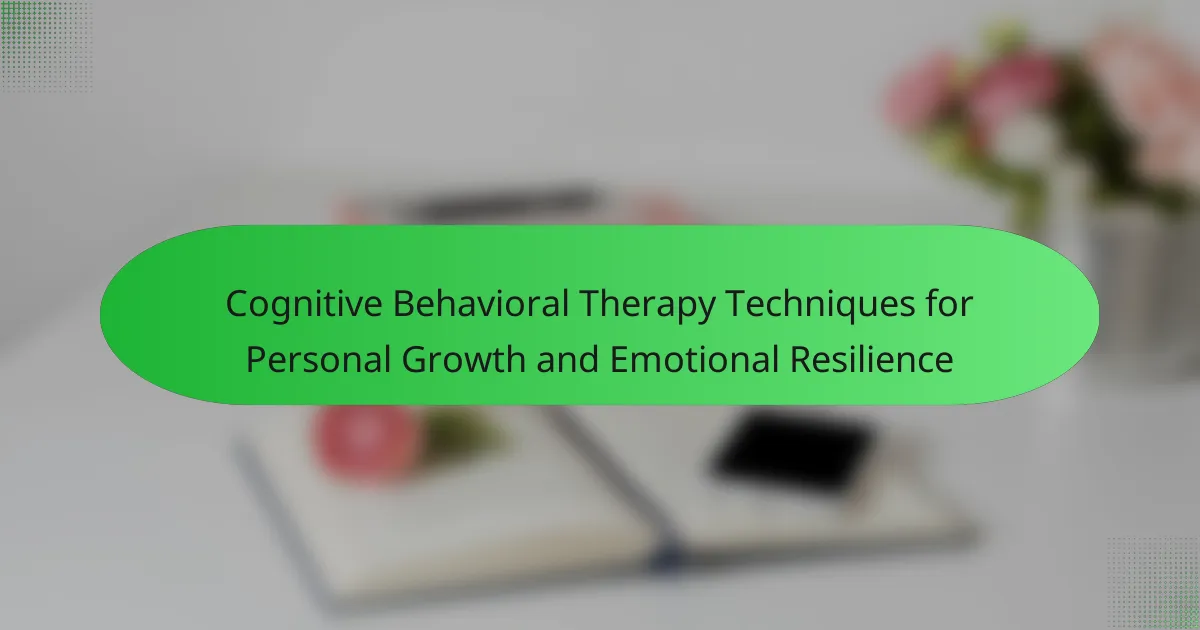Visualization techniques for goal setting can significantly enhance clarity and motivation. This article explores methods such as mental imagery, vision boards, and guided visualization. It also discusses mind mapping and flowcharts for organizing thoughts and tracking progress. Additionally, it addresses cultural influences and common challenges in effectively utilizing these techniques.

What are Visualization Techniques for Goal Setting?
Visualization techniques for goal setting enhance clarity and motivation. Techniques include mental imagery, vision boards, and guided visualization. Mental imagery involves vividly picturing the desired outcome, reinforcing belief in success. Vision boards display images and words that represent goals, serving as daily reminders. Guided visualization uses relaxation and imagery to mentally rehearse achieving goals, boosting confidence and focus. Each technique fosters a positive mindset, increasing the likelihood of success.
How do Visualization Techniques Enhance Goal Achievement?
Visualization techniques significantly enhance goal achievement by improving focus and motivation. These techniques create mental images that clarify objectives, making them more tangible and attainable.
Visualization fosters a positive mindset, boosting confidence and reducing anxiety about challenges. Studies indicate that athletes and successful individuals often use these techniques to mentally rehearse their achievements, resulting in improved performance and goal realization.
By regularly practicing visualization, individuals can reinforce their commitment to their goals, aligning their actions with their desired outcomes. This method not only enhances clarity but also strengthens emotional connections to the goals, increasing the likelihood of success.
Why is Visualization Important in Personal Development?
Visualization is crucial in personal development as it enhances goal clarity and motivation. Effective visualization techniques help individuals define their objectives and maintain focus on achieving success. By mentally picturing desired outcomes, individuals can create a roadmap for their aspirations. This practice not only boosts confidence but also aligns actions with goals, making success more attainable. Research indicates that visualization can improve performance by reinforcing positive behaviors and reducing anxiety, further supporting the journey toward personal growth.

Which Types of Visualization Techniques are Most Effective?
Visualization techniques that effectively support goal setting and achieving success include mind mapping, flowcharts, and vision boards. These methods enhance clarity, foster motivation, and facilitate tracking progress.
Mind mapping organizes thoughts visually, making complex ideas more manageable. Flowcharts illustrate processes, helping identify steps toward goals. Vision boards serve as motivational tools, visually representing aspirations and desired outcomes.
By employing these techniques, individuals can create a structured approach to their goals, leading to improved focus and achievement.
How Does Mental Imagery Impact Performance?
Mental imagery significantly enhances performance by improving focus and boosting confidence. Visualization techniques help individuals clearly define their goals and mentally rehearse the steps needed to achieve them. Research shows that athletes who use mental imagery can enhance their physical performance by as much as 20%. This technique leverages the brain’s ability to simulate experiences, reinforcing the neural pathways associated with the desired actions. Effective visualization includes detailed imagery of the process and emotional engagement, making the practice more impactful.
What Role Does Vision Board Play in Goal Setting?
Vision boards play a significant role in goal setting by visually representing aspirations. They enhance motivation and focus, helping individuals clarify their objectives. Research indicates that visualization techniques, like vision boards, can increase the likelihood of achieving goals by reinforcing positive thinking and commitment. Regularly interacting with a vision board can lead to a deeper emotional connection with goals, making them feel more attainable.
How Can Guided Visualization Sessions Improve Focus?
Guided visualization sessions significantly enhance focus by training the mind to concentrate on specific goals. These sessions employ imagery techniques that help individuals visualize their objectives clearly, leading to improved mental clarity and motivation.
Research indicates that regular practice of visualization can strengthen neural pathways associated with focus and attention. This technique allows individuals to mentally rehearse tasks, reducing anxiety and increasing confidence, which further contributes to enhanced concentration during actual performance.
Additionally, guided visualization can create a state of relaxation, minimizing distractions and promoting a deeper level of engagement with tasks. As a result, individuals often find it easier to maintain focus and achieve their goals efficiently.

What Psychological Principles Underlie Visualization Techniques?
Visualization techniques are grounded in psychological principles like cognitive rehearsal and the law of attraction. These principles enable individuals to mentally simulate achieving their goals, enhancing motivation and focus. Cognitive rehearsal involves visualizing the steps to success, which strengthens neural pathways related to those actions. The law of attraction suggests that positive visualization can manifest desired outcomes by aligning thoughts with goals. Together, these principles create a powerful framework for effective goal setting and achievement.
How Does the Law of Attraction Relate to Visualization?
The Law of Attraction enhances visualization by aligning thoughts with desired outcomes. Visualization techniques create a mental image of goals, reinforcing belief in their achievement. This practice increases motivation and focus, making success more attainable. Engaging in vivid imagery activates emotional responses, further attracting positive results.
Why is Neuroplasticity Significant in Visualization Practices?
Neuroplasticity is significant in visualization practices because it enables the brain to adapt and rewire itself based on experiences and thoughts. Visualization techniques leverage this ability, allowing individuals to create mental images of their goals, which can lead to real-world success. By repeatedly visualizing desired outcomes, the brain strengthens neural pathways associated with those goals, enhancing motivation and performance. This process is particularly effective in sports, education, and personal development, where mental rehearsal can improve skills and boost confidence. Ultimately, harnessing neuroplasticity through visualization can transform intentions into achievements, making it a powerful tool for personal growth.

How Can Cultural Context Influence Visualization Practices?
Cultural context significantly shapes visualization practices by influencing how goals are perceived and represented. Different cultures prioritize various values, which affects the symbols and colors used in visualizations. For instance, Western cultures often favor direct and straightforward visual formats, while Eastern cultures may incorporate more intricate designs that reflect harmony and balance. This divergence can impact the effectiveness of visualization techniques in goal setting and achieving success. Understanding these cultural nuances allows individuals and organizations to tailor their visualization strategies to resonate better with diverse audiences.
What Visualization Techniques are Popular in Different Regions?
Visualization techniques for goal setting vary across regions, influenced by cultural preferences and practices. Popular methods include mind mapping, which is widely used in Western countries for brainstorming and organizing thoughts. In contrast, Asian cultures often favor visual storytelling, utilizing diagrams and illustrations to convey complex ideas.
Furthermore, the use of vision boards is prevalent in North America, allowing individuals to visualize their goals through images and affirmations. In Europe, data visualization techniques like infographics are common, helping to present information clearly and attractively.
Each region’s approach reflects its unique values and understanding of success, showcasing the diversity in visualization practices.
How Do Local Beliefs Shape Visualization Approaches?
Local beliefs significantly influence visualization approaches by shaping the values and narratives individuals associate with their goals. Cultural contexts determine what success looks like and how it is represented visually. For example, in some cultures, communal achievements may be prioritized over personal milestones, affecting how individuals visualize their goals. Additionally, local beliefs can dictate the symbols and colors used in visualization, impacting the emotional resonance of the imagery. This cultural lens can enhance motivation and clarity, aligning personal aspirations with broader societal values. Understanding these dynamics can lead to more effective visualization techniques tailored to specific audiences.

What Common Challenges Do Individuals Face with Visualization?
Individuals often face challenges in visualization, including difficulty maintaining focus, unclear goals, and lack of belief in their ability to achieve success. These obstacles can hinder the effectiveness of visualization techniques. For instance, distractions may prevent individuals from fully engaging in the process, while vague or unrealistic goals can lead to frustration. Additionally, self-doubt can undermine motivation, making it hard to visualize success convincingly. Addressing these challenges is essential for maximizing the benefits of visualization in goal setting.
How Can Negative Self-Talk Hinder Visualization Efforts?
Negative self-talk can significantly undermine visualization efforts by creating mental barriers. When individuals engage in negative self-talk, they often reinforce limiting beliefs, which can distort their ability to visualize success. This internal dialogue can lead to self-doubt, reducing motivation and focus. As a result, the effectiveness of visualization techniques diminishes, making it harder to achieve goals. Positive self-affirmation is essential to counteract these negative thoughts and enhance visualization outcomes.
What Strategies Can Overcome Visualization Barriers?
Visualization barriers can be overcome using specific strategies. Focus on creating a clear mental image of your goals, breaking them down into smaller, manageable tasks. Use positive affirmations to reinforce belief in your ability to achieve these goals. Regularly practice visualization techniques, such as guided imagery or vision boards, to enhance mental clarity. Finally, seek feedback and accountability from peers or mentors to maintain motivation and refine your approach.

What Unique Benefits Can Visualization Techniques Offer?
Visualization techniques offer unique benefits such as enhanced focus, improved motivation, and clearer goal clarity. These methods can significantly increase success rates by creating a mental image of desired outcomes. By engaging the mind’s eye, individuals can reinforce positive behaviors and stay committed to their goals. This mental rehearsal can lead to better performance in various areas, including personal development and professional achievements.
How Can Visualization Enhance Motivation and Commitment?
Visualization enhances motivation and commitment by creating a clear mental image of goals. This technique improves focus and reinforces positive outcomes. Visualization techniques, such as mental imagery and vision boards, help individuals see their success, increasing their drive to achieve it. Research shows that athletes who visualize their performance often outperform those who do not. This mental rehearsal builds confidence and commitment, making it a powerful tool for goal achievement.
What Distinct Outcomes Can Be Achieved Through Consistent Practice?
Consistent practice of visualization techniques leads to enhanced focus, increased motivation, and improved goal achievement. Regularly visualizing success reinforces belief in one’s capabilities and helps clarify objectives. This mental rehearsal can significantly boost performance in various areas, such as sports, academics, and professional endeavors. As a result, individuals often experience greater confidence and resilience, enabling them to navigate challenges more effectively.

What are the Best Practices for Effective Visualization?
Effective visualization enhances goal setting and success by clarifying objectives and tracking progress. Key practices include using clear visuals, maintaining simplicity, and aligning visuals with goals.
1. Define specific goals to guide your visualization.
2. Use charts or diagrams to represent data and milestones.
3. Regularly update visuals to reflect progress and changes.
4. Engage with stakeholders for feedback on visual effectiveness.
How to Create a Personalized Visualization Routine?
To create a personalized visualization routine, identify specific goals and visualize them vividly. Start by setting aside dedicated time daily for visualization. Use a quiet space, close your eyes, and imagine your goals as if they are already achieved. Incorporate sensory details to enhance the experience. Regular practice reinforces mental pathways, making it easier to pursue those goals in reality.
What Common Mistakes Should Be Avoided in Visualization?
To achieve successful visualization, avoid these common mistakes: lack of clarity, overcomplication, neglecting audience needs, and failing to set specific goals. These pitfalls can hinder effective communication and limit goal attainment. Focus on simplicity, audience engagement, and clear objectives to enhance visualization effectiveness.
How Can Feedback Loops Improve Visualization Techniques?
Feedback loops enhance visualization techniques by promoting continuous improvement and adaptability. They allow individuals to assess progress and adjust strategies effectively. Regular feedback helps identify which visualization methods resonate most, ensuring alignment with goals. By integrating feedback, users can refine their visual tools to better support decision-making and track success.



